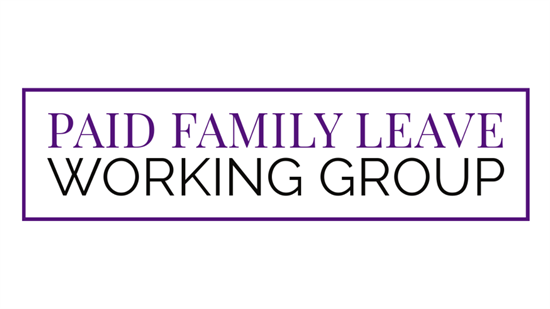House Bipartisan Paid Family Leave Working Group Releases Policy Framework for 2024Framework highlights the working group’s consensus on possible legislative options to achieve its mission of providing more families with more paid leave.
Washington,
January 8, 2024
WASHINGTON, D.C. – Today, members of the bipartisan Paid Family Leave Working Group, co-chaired by Representatives Chrissy Houlahan (D-PA) and Stephanie Bice (R-OK), released a policy framework outlining the group’s consensus for paid leave legislative options thus far. The framework includes four pillars of possible legislative policy: a public-private partnership pilot, coordination and harmonization of paid leave benefits across states, small employer pooling for paid leave insurance, and improvements to paid leave tax credits for small businesses and working families. As next steps, members of the group will explore these core pillars in a bipartisan manner and with various stakeholders in forthcoming meetings. In addition to Co-Chairs Houlahan and Bice, the evenly divided House group includes Representatives Colin Allred (D-TX), Mariannette Miller-Meeks, M.D. (R-IA), Haley Stevens (D-MI), and Julia Letlow (R-LA). Read the framework here or below: Legislative Framework Background: The House bipartisan Paid Family Leave Working Group is evenly divided between Republicans and Democrats. Members include Co-Chairs Chrissy Houlahan (D-PA) and Stephanie Bice (R-OK) and Representatives Colin Allred (D-TX), Mariannette Miller-Meeks, M.D. (R-IA), Haley Stevens (D-MI), and Julia Letlow (R-LA). Our mission is to provide more families with more paid leave. As a result of a year-long fact-finding effort, we are putting forth a legislative framework that reflects our mission. This list is not comprehensive but rather reflects a current consensus about possible legislative options. We look forward to collaborating and working through the options with stakeholders and Members across parties and chambers. It is our intent that this would be passed in a package with offsets and pay-fors. Core Pillars of Legislative Framework: 1. Public-Private Partnership Paid Leave Pilot Target: States who want to set up a new paid leave program Fourteen states and the District of Columbia have built their own paid leave systems. To help more states establish a paid leave program that’s right for them, a public-private partnership to facilitate standing up and operating state-run programs is being considered by the Working Group. This option would be available to states that have existing paid leave programs and those seeking to establish a new one. In developing a possible public-private partnership pilot, the working group will consider a variety of issues, such as any possible restrictions on how funds are used, potential standards or harmonization of rules for state programs, and how funding and oversight will be directed through the appropriations process and with the committees of jurisdiction. 2. Coordination and Harmonization of Paid Leave Benefits Across States Targets: States with existing programs who need to navigate providing a variety of benefits. Multi-state employers and employees who provide and utilize benefits. Potential states who may want to provide benefits in the future. Overall, this will help streamline all stakeholders, increase transparency, and modernize the delivery of benefits. Creation of an “Interstate Paid Leave Action Network (I-PLAN)” that would drive improvements in coordination and harmonization of these benefits across the growing number of states with their own paid leave programs – and do so in a way that works for states, employers, and employees. The I-PLAN would convene existing paid leave states, formulate recommendations, and award grants in pursuit of the following purposes:
3. Small Employer Pooling for Paid Leave Insurance Target: Small businesses Modeled off of previous bipartisan success for retirement benefits in Secure 1.01, this concept could authorize small employers to join association-style insurance pooling plans, with the goal of pooling risk and lowering the cost of providing paid family leave. This provision could also include guardrails or direct ways to incentivize businesses with more low-income workers to join this risk-sharing pool. 4. Improvements to 45S – Paid Leave Tax Credits for Small Businesses and Working Families Target: Small businesses and working families The existing 45S employer-paid family and medical leave tax credit aims to increase the number of employers who offer paid family and medical leave programs by allowing employers to partially offset their costs through this credit. Yet still, very few employers use the tax credit, leaving workers without access to paid leave benefits. In order to address these shortfalls, we may pursue a number of possible reforms to improve the reach and accessibility of 45S. Ideas could include:
ICYMI: On December 11, the Working Group release its end of year report, which highlights the group’s work done in 2023. The House bipartisan Paid Family Leave Working Group was launched in January of 2023 to explore federal paid family leave policies. Supported by the Bipartisan Policy Center and other organizations, the working group’s mission is to bring more paid leave to more Americans through enduring policy solutions. ### |
Press Releases




